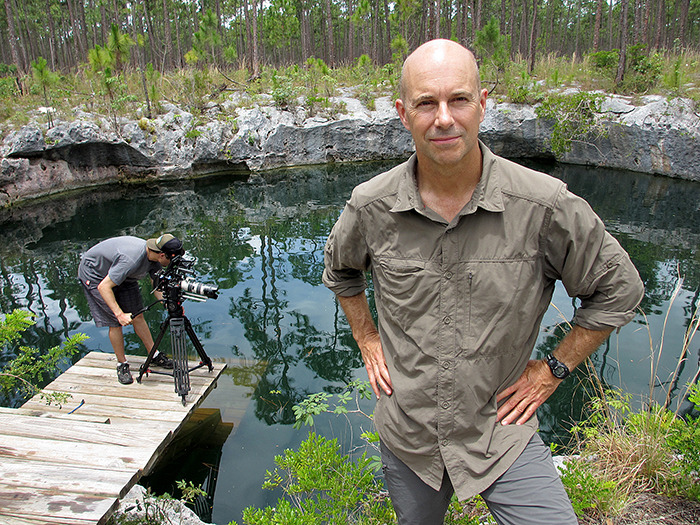We recently shot a show that will be delivered to broadcasters in 1080i. Our 3D camera system choice for this shoot was a beam splitter with two Sony EX3s gen-locked, recording a 140mb to Nano3D drives.
Because of the large amount of VFX work and the convergence needs of 3D, we wanted to capture native 3D in 1080p – this makes it possible to work with a full frame of information.
When our DOP camera-tested native 3D he found that it was only possible to shoot 1080i as that’s what standard the Nano3D drives record to – even though the genlocked EX3 system was set to record 1080p. Annoying, but I decided we’d make it work.
So we got the footage in as 1080i – and loaded it into the off-line FCP and Cineform 3D edit system. That’s where we ran into a problem.
What was going on? The native files were playing back fine in FCP – but when we brought it over to Cineform to do convergence and 3D adjustments we got visual tearing and had interlace issues. When we did our adjustments the fields no longer matched.
We identified the source of the problem was within Cineform First Light, and it was the interlaced files that didn’t match – in interlaced footage the shot was broken up into two fields, top and bottom. Our problem was with our adjustments – the order was being mixed up so the shots looked terrible.
So went back to the source file – and figured out we had to add another step and de-interlace it and then re-input the 1080p frame back into Cineform and then it would work – making it 1080p, the frame file we wanted to shoot it in the first place.
Bonus: as we problem-solved the above interlacing issue with Cineform we also found out that the Nano drives can record 1080p – if you tell them that the signal is in fact 1080psf.
PSF stands for Progressive Segmented Frames and it is how the camera delivers video down a single SDI cable. 1080p is so large it has to broken up into smaller pieces – called, packets. It doesn’t change the video, just reformats the video during transmission down the cable.
One has to tell the Nano drives that the signal is coming as a 1080psf – and it will happily record 1080p. So now we don’t have to de-interlace the file and can work in 1080p right off the drive.
After the 3D and VFX work is done and the final on-line completed we can re-interlace the files and deliver final output to the broadcaster.
So on future shoots we can shoot 1080p – we just have to tell the Nano drives that it’s coming IN as 1080psf – not 1080p.
One less step to take in our post work flow – and now we can work in 1080p.
–Ian Herring , President

